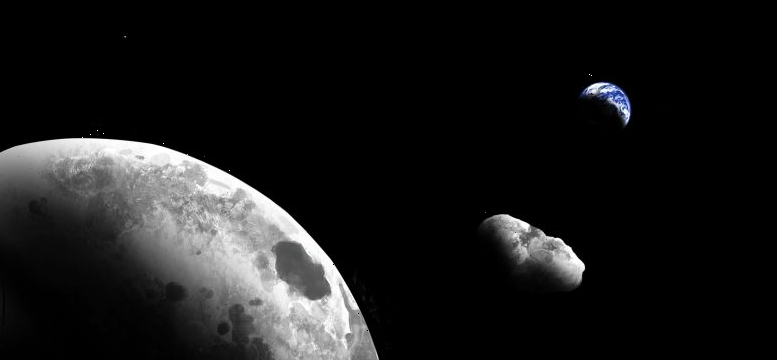THE mystery origins of an asteroid commonly referred to as Earth's "second moon" may have finally been revealed thanks to a new study.
The quasi-moon, known as Kamo’oalewa, was discovered by scientists at the University of Hawaii in 2016 and takes its name from Hawaiian chants alluding to "an offspring that travels on its own."
Measuring around 50m in diameter – or roughly the size of the Leaning Tower of Pisa in Italy or the Cinderella Castle in Disney World – the asteroid circles in the Earth in a corkscrew-like trajectory at a distance of about nine million miles.
That's a significant difference from Earth's more familiar Moon, Luna, which orbits the planet at a distance of 239,000 miles.
Kamo’oalewa's odd flight path is caused by the competing gravitational pulls of the Earth and the sun, which bend the asteroid's motions.
Due to its orbit, Kamo’oalewa can only be observed from Earth for a few weeks every April. Its relatively small size means that it can only be seen with one of the largest telescopes on Earth, only adding to its mystery.
But now, the secret surrounding the modest rock's origins may finally have been revealed, according to a new study in Nature, which was led by Ben Sharkey of the Lunar and Planetary Laboratory at the University of Arizona.
MYSTERY UNRAVELLED
“It’s primarily influenced just by the sun’s gravity, but this pattern shows up because it’s also—but not quite—on an Earth-like orbit. So it’s this sort of odd dance,” Sharkey said in a statement of Kamo’oalewa.
While asteroids are far from uncommon in the great void above, Kamo’oalewa is different in its appearance.
Asteroids tend to reflect brightly in certain infrared frequencies, but Kamo’oalewa doesn't. It's dimmer – suggesting it's made of different materials and therefore likely has a different origin.
Using the University of Arizona-managed Large Binocular Telescope on Mount Graham, Sharkey found that Kamo’oalewa pattern of reflected light, called a spectrum, matches lunar rocks from NASA’s Apollo missions, suggesting it originated from the moon itself.
It's unclear how it may have broken loose. That's because there are no other known asteroids that have lunar origins.
“I looked through every near-Earth asteroid spectrum we had access to, and nothing matched,” he said.
Sharkey continued to debate with his adviser, associate professor Vishnu Reddy, over a period of three years about a plausible explanation for the rock's origins.
“We doubted ourselves to death,” said Reddy, adding that the final piece of the puzzle was found in April this year.
“This spring, we got much-needed follow-up observations and went, ‘Wow it is real,'” Sharkey said. “It’s easier to explain with the moon than other ideas.”
LUNAR ORIGINS
Kamo’oalewa's unstable orbit provides another clue to its lunar origins because it's not typical of other near-Earth asteroids, co-author Renu Malhotra said.
“It is very unlikely that a garden-variety near-Earth asteroid would spontaneously move into a quasi-satellite orbit like Kamo'oalewa’s,” she said.
“It will not remain in this particular orbit for very long, only about 300 years in the future, and we estimate that it arrived in this orbit about 500 years ago,” Malhotra said.
After that, the moon rock will spend the rest of its long life traveling alone through space.
Malhotra said that her lab is working on a paper to further investigate the asteroid.
In the meantime, Sharkey said he believes Kamo’oalewa is a chunk of lunar rock that broke free from the surface of the Moon under a bombardment of space rubble – a common occurrence over the last few billion years.
Instead of making it to the Earth's surface in the form of a meteorite or floating off deeper into space, Sharkey said it became a quasi-satellite in its own right.
“We see thousands of craters on the moon, so some of this lunar ejecta has to be sticking around in space,” he said.
We pay for your stories!
Do you have a story for The US Sun team?
Email us at [email protected] or call 212 416 4552.
Like us on Facebook at www.facebook.com/TheSunUS and follow us from our main Twitter account at @TheSunUS
Source: Read Full Article


